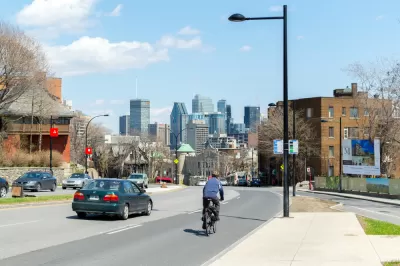The Lancet medical journal published a series of articles that explore how to evaluate and guide urban planning decisions to create healthy and sustainable cities. Live long and prosper!

Urban Design, Transport, and Health
The Lancet Global Health, Vol. 10, No. 6
Executive Summary
Good city planning produces co-benefits for individual and planetary health and wellbeing. In 2016, the Lancet Series on urban design, transport, and health drew attention to the importance of integrated upstream city planning policies as a pathway to creating healthy and sustainable cities, and proposed a set of city planning indicators that could be used to benchmark and monitor progress. In this follow-up series, the authors show how the indicators can guide decisions about what must change in order to create healthy and sustainable cities and how research can be used to guide urban policy to achieve urban and population health. They provide tools that other cities can use to replicate the indicators, and explore “where to next” to create healthy and sustainable cities, particularly in light of the COVID-19 pandemic and climate change.
-
Creating healthy and sustainable cities: what gets measured, gets done
Billie Giles-Corti, Anne Vernez Moudon, Melanie Lowe, Deepti Adlakha, Ester Cerin, Geoff Boeing, and others
-
Urban design is key to healthy environments for all
Thiago Herick de Sa, Abraham Mwaura, Cristina Vert, Pierpaolo Mudu, Nathalie Roebbel, Nhan Tran, and others
-
Measuring what matters: supporting cities in tackling climate and health challenges
Honorine van den Broek d’Obrenan, Rachel Huxley
-
The future is urban: integrated planning policies can enable healthy and sustainable cities
Deepti Adlakha, Felix John
-
City planning policies to support health and sustainability: an international comparison of policy indicators for 25 cities
Melanie Lowe, Deepti Adlakha, James F Sallis, Deborah Salvo, Ester Cerin, Anne Vernez Moudon, and others
-
Determining thresholds for spatial urban design and transport features that support walking to create healthy and sustainable cities: findings from the IPEN Adult study
Ester Cerin, James F Sallis, Deborah Salvo, Erica Hinckson, Terry L Conway, Neville Owen, and others
-
Using open data and open-source software to develop spatial indicators of urban design and transport features for achieving healthy and sustainable cities
Geoff Boeing, Carl Higgs, Shiqin Liu, Billie Giles-Corti, James F Sallis, Ester Cerin, and others
-
What next? Expanding our view of city planning and global health, and implementing and monitoring evidence-informed policy
Billie Giles-Corti, Anne Vernez Moudon, Melanie Lowe, Ester Cerin, Geoff Boeing, Howard Frumkin, and others
FULL STORY: Urban Design, Transport, and Health

Manufactured Crisis: Losing the Nation’s Largest Source of Unsubsidized Affordable Housing
Manufactured housing communities have long been an affordable housing option for millions of people living in the U.S., but that affordability is disappearing rapidly. How did we get here?

Americans May Be Stuck — But Why?
Americans are moving a lot less than they once did, and that is a problem. While Yoni Applebaum, in his highly-publicized article Stuck, gets the reasons badly wrong, it's still important to ask: why are we moving so much less than before?

Research Shows More Roads = More Driving
A national study shows, once again, that increasing road supply induces additional vehicle travel, particularly over the long run.

Which US Rail Agencies Are Buying Zero-Emissions Trains?
U.S. rail agencies are slowly making the shift to zero-emissions trains, which can travel longer distances without refueling and reduce air pollution.

San Diego School District Approves Affordable Housing Plan
The district plans to build workforce housing for 10 percent of its employees in the next decade and explore other ways to contribute to housing development.

Lawsuit Aims to Stop NYC’s ‘City of Yes’ Zoning Reforms
A lawsuit brought by local lawmakers and community groups claims the plan failed to conduct a comprehensive environmental review.
Urban Design for Planners 1: Software Tools
This six-course series explores essential urban design concepts using open source software and equips planners with the tools they need to participate fully in the urban design process.
Planning for Universal Design
Learn the tools for implementing Universal Design in planning regulations.
City of Moreno Valley
Institute for Housing and Urban Development Studies (IHS)
City of Grandview
Harvard GSD Executive Education
NYU Wagner Graduate School of Public Service
City of Cambridge, Maryland
Newport County Development Council: Connect Greater Newport





























